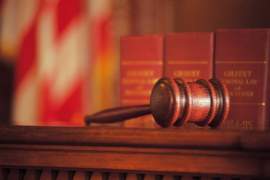
Assembly Explained

Popular In Constitution
Purpose Of Lifetime Appointment And Pros And Cons Enumerated Powers Bicameral Legislature Background Article 3 Of The Constitution We The People 1st Amendment Who Wrote The Constitution Judicial Review Equal Protection Clause Three Fifths Compromise 10th Amendment 5th Amendment
The decisions which the Supreme Court has made on the issue of free assembly refer back to the Bill of Rights and the First Amendment, which allows for the "right of the people peaceably to assemble, and to petition the Government for a redress of grievances". Many of the instances of political protest and dissent that have occurred throughout American history, such as the civil rights movement and the antiwar movement of the 1960s, have been placed for the purposes of the Supreme Court under the heading of the right to freedom of assembly.
The room for interpretation which exists toward this right exists in the requirement that it be exercised "peaceably." The assembly of protesters will also be governed by the laws and regulations normally applied to citizens. The Supreme Court and lower Federal courts have used the doctrine of "strict scrutiny" to requires lawmakers to prove that a law or regulation is not being targeted toward the right of freedom of assembly but has been passed to accomplish a legitimate and demonstrable goal, as is adjudged to be a "compelling" Government interest.
The high importance placed on the right of freedom
of assembly has meant that it has been upheld by the Supreme Court even in
cases involving demonstrations considered highly offensive or controversial by
the surrounding community. The Supreme Court found in the 1977 case of National
Socialist Party v. Skokie, for instance, that a planned Nazi march aimed at
upsetting the Jewish residents of a neighborhood could be allowed as a
permissible form of assembly. This right can generally be upheld in regard to
the content of the assembly unless it contains messages specifically
threatening violent or otherwise criminal actions.
Related
issues have also been dealt with by the Supreme Court in regard to the
contemporary anti-abortion, right-to-life movement, noted for assembling
outside of abortion clinics. In order to provide for the safety of staffers and
visitors to these facilities, the Supreme Court may allow for requirements that
the assembly of protesters take place at a certain distance from the clinic.
The rights of minors in regard to freedom of
assembly have also been addressed by the Supreme Court. Minors are considered
more vulnerable than adults and thus are often placed under a greater degree of
State control in order to provide for their protection. The Supreme Court has
shown, however, that it expects any laws that are passed toward this end to
also provide, as much as they can, for the need to honor rights such as that to
the freedom of assembly. Laws must thus be addressed "narrowly", in
regard to a wide array of issues, to show that they are needed and intended for
a particular end.
The Supreme Court drew on this requirement in the 1969 case of Shuttleworth v. Birmingham to remove a city ordinance for parades, finding that this law gave too much discretion to the responsible officials and thus raised the possibility that the law would be used to infringe on rights to free assembly.
NEXT: Children's Right in the Supreme Court





















